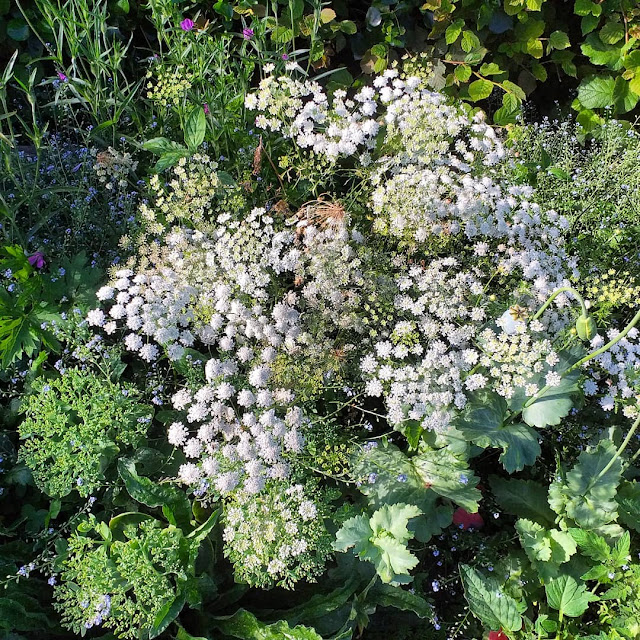How I Use My Art Degree in Garden Designs and Development
As a garden designer and developer, I am often asked how my art degree plays a role in creating outdoor spaces. At first glance, you might think that gardening is all about plants, soil, and maintenance, but the truth is, design is at the heart of everything I do. My background in art has allowed me to approach garden design with a unique perspective, blending creativity and technical skills to craft beautiful, functional spaces.
Here’s how my art degree enhances my work and benefits my clients:
1. Understanding Visual Composition
One of the first lessons I learned as an art student was the importance of visual composition—how different elements work together to create balance, harmony, and interest. This principle is just as relevant in garden design. Whether it’s arranging plants in an aesthetically pleasing way or designing hardscapes like pathways, patios, and walls, my art background gives me a strong sense of balance and proportion.
In garden design, I consider the flow of space, the focal points, and the way light and shadow interact with the landscape throughout the day. I draw on my artistic training to ensure every garden element contributes to the overall visual experience, creating an inviting and cohesive outdoor environment.
2. Color Theory and Texture
Just like in a painting or sculpture, color and texture are essential components of a well-designed garden. My art degree has given me an in-depth understanding of color theory, allowing me to choose plant colors that complement each other and bring vibrancy to the landscape. I also take into account the changing seasons, selecting plants that provide year-round visual interest.
Texture is another element I learned to appreciate in my art education, and it plays a big role in garden design. Combining various textures—from the soft leaves of ornamental grasses to the rough surfaces of stone pathways—creates a sensory experience for anyone who steps into the garden.
3. Creativity and Innovation
Art teaches you to think outside the box, and this mindset is something I carry with me in every project. Whether I’m designing a small urban garden or a sprawling landscape, I bring an innovative approach to each space. I’m not just looking to create a functional garden; I want to push the boundaries of traditional design, incorporating artistic features that make each space unique.
I enjoy finding creative solutions to challenges, such as transforming a limited space into a multi-functional area or using unconventional materials to create stunning visual effects. My art degree has fostered an environment of constant exploration, and this fuels my desire to create gardens that feel as much like living art as functional outdoor spaces.
4. Drawing and Visualization
One of the most practical skills I gained from my art degree is the ability to draw and visualize spaces before they are built. When working on a garden design, I begin by sketching out ideas, whether through hand-drawn illustrations or digital renderings. This helps me—and my clients—get a clear picture of the final result before any work begins.
My ability to visualize a space in 3D allows me to play with different layouts, materials, and planting schemes to determine what works best. This is especially valuable in ensuring that the design flows well with the existing architecture of the home or the surrounding environment.
5. Incorporating Artistic Features
As an artist, I have a deep appreciation for the aesthetic qualities of art and craftsmanship. I often incorporate sculptures, water features, and other artistic elements into my garden designs to add character and visual interest. These pieces are not just decorative; they become focal points that elevate the entire space.
From hand-crafted garden benches to custom-designed trellises, I use my artistic skills to create unique features that complement the natural beauty of the garden and reflect the client’s personality and style. Every garden becomes a canvas where nature and art coexist in harmony.
6. Attention to Detail
In art, the smallest details often have the biggest impact. This attention to detail translates directly into my garden designs. I pay close attention to the way plants interact with each other, the texture of the materials used, and how different elements of the garden connect with one another.
Whether it’s the way a flower’s color echoes the tone of a stone pathway or how a carefully placed tree casts shade on a seating area, these subtle details are what make a garden feel thoughtfully designed and inviting.
7. Designing for Emotions and Experiences
Art has the power to evoke emotions, and I use this concept in my garden designs. Just as a painting can set a mood or tell a story, a garden can do the same. Whether I’m designing a tranquil Zen garden, a lively space for entertaining, or a romantic garden with soft lighting and fragrant flowers, I always consider the emotional impact the space will have on those who experience it.
A garden is more than just a collection of plants; it’s a place to relax, connect with nature, and make memories. My art background helps me design outdoor spaces that speak to the soul and create lasting impressions.
Final Thoughts
My art degree has given me a unique toolkit that sets me apart as a garden designer and developer. It allows me to approach every project with creativity, precision, and a deep appreciation for the beauty of the natural world. By blending artistic principles with horticultural knowledge, I create gardens that are not only functional but also visually stunning and emotionally resonant.
If you're interested in transforming your outdoor space, I'd love to work with you to bring your vision to life. Let's create a garden that speaks to your style and enhances your lifestyle!



Comments
Post a Comment